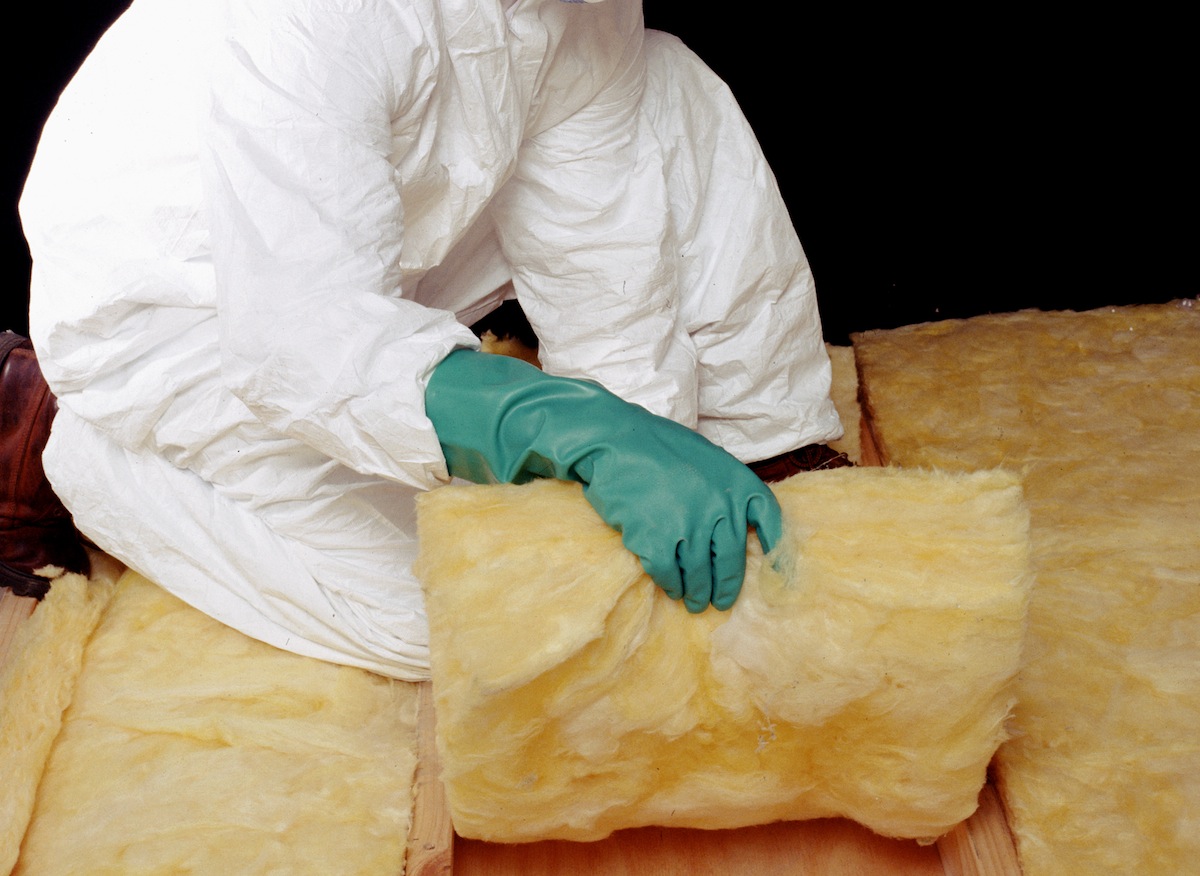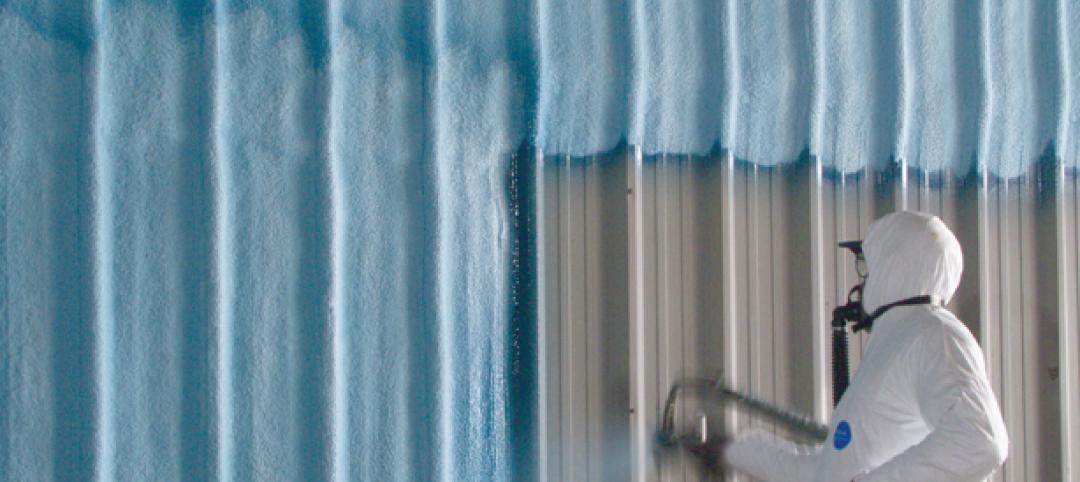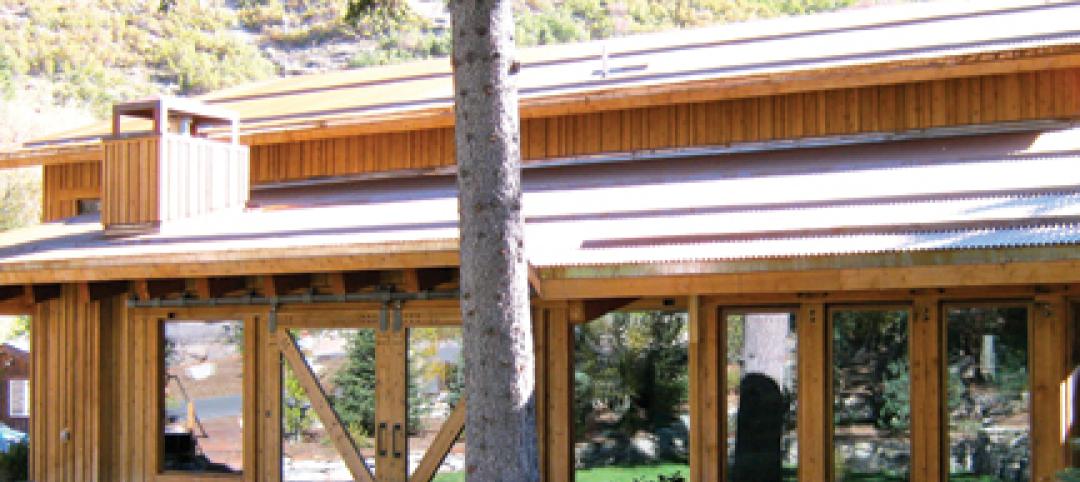Performance is crucial for insulation. “Superinsulation” and continuous insulation (abbreviated “ci”) across the entire envelope are critical elements of highly sustainable and net-zero projects, says Perkins+Will’s Cillian Collins. Green roofs, living walls, and some rainscreen enclosures offer a variety of insulating and environmental qualities.
Mineral wool, which is highly fire resistant, can also be effective, says SmithGroupJJR’s Andrew Dunlap. Wiss, Janney, Elstner’s Fiona Aldous mentions phase-change materials, super-thick insulation, and high-performance insulating blankets with R-values exceeding nine per inch of thickness.
The latest trend, says Aldous, is to ensure that the exterior wall assembly complies with continuous insulation requirements (where required) and NFPA 285, the IBC-mandated testing of combustible envelope material assemblies, including foam plastic insulation and certain water-resistive barriers.
Aldous says that even the best-designed envelopes can be undermined by thermal bridging in areas where insulation is deficient. She recommends the following:
• Determine how much insulation is needed, and how to install it properly.
• Evaluate the insulation’s permeability and the risk of creating an unintended vapor barrier.
• Locate the insulation correctly within the wall assembly.
• Use insulation to manage vapor movement or air leakage (or both).
• Minimize thermal bridges.
• Meet continuous insulation (ci) requirements.
• Comply with NFPA 285.
The choice of the correct insulation should be more than a rush to the highest available R-value. The products selected must contribute to a system that controls the flow of air, heat, vapor, and water. Older buildings’ envelopes, which may be leakier and less insulated, at least have a good potential for drying; the tighter, high-R-value envelopes in favor today allow very little thermal flow. So if there is bulk water intrusion or vapor/air leakage, moisture can remain in the envelope long enough to lead to mold, corrosion, and dry rot.
There are many options for envelope insulation. Fiberglass, rock wool, and slag wool have been used for decades, but now there’s rigid board, cellulose, and foam insulation, as well as cotton, wool, and hemp.
Hemp insulation (which was just recently allowed in the U.S.) comes from a renewable resource and is biodegradable and breathable, according to building enclosure experts. Hemp has good sound absorption, resists mold and bugs, and is stiffer than many other fiber insulations, so it doesn’t slump after it’s installed.
Slumping and movement following installation can be a problem, so passive designers have been looking to building materials that have insulation built into the material’s structure, such as structural insulated panels (SIPs), insulating concrete forms (ICFs), and insulated metal panels (IMPs). Polystyrene or polyurethane foams are major components of these prefabricated systems.
Another option: vacuum-insulated panels filled with aerogels. These so-called “VIPs” are panels with fumed silica or fibrous layers with nanopores. Some enclosure experts say they can enhance design flexibility, as they are thinner than some other insulations.
According to the USDOE Oak Ridge National Laboratory, open-cell aerogels are 90% or more air by volume and offer “unique physical properties, including the highest thermal resistivity, the highest specific surface area, the lowest density, the lowest refractive index, and the lowest dielectric constant of all solid materials.”
The dominant specs for insulation are plastics, some of which contain recycled content. Plastic foam board and spray-applied materials perform well as envelope insulation, both above and below grade.
Related Stories
| Apr 12, 2011
Spray Foam Applications on the Rise
New uses for spray polyurethane foam enable Building Teams to achieve greater longevity and sustainability in their projects.
| Feb 11, 2011
Four Products That Stand Up to Hurricanes
What do a panelized wall system, a newly developed roof hatch, spray polyurethane foam, and a custom-made curtain wall have in common? They’ve been extensively researched and tested for their ability to take abuse from the likes of Hurricane Katrina.
| Feb 9, 2011
Kingspan Insulated Panels Announces Path to NetZero Mobile App
Kingspan Insulated Panels North America, a global manufacturer of insulated metal panels, announces the availability of its new Path to NetZero mobile app. Introduced at Greenbuild 2010, this unique tool for the building industry simulates the process of achieving high-performance and net-zero buildings.
| Dec 17, 2010
5 Tips on Building with SIPs
Structural insulated panels are gaining the attention of Building Teams interested in achieving high-performance building envelopes in commercial, industrial, and institutional projects.
| Oct 13, 2010
Prefab Trailblazer
The $137 million, 12-story, 500,000-sf Miami Valley Hospital cardiac center, Dayton, Ohio, is the first major hospital project in the U.S. to have made extensive use of prefabricated components in its design and construction.
| Sep 13, 2010
Data Centers Keeping Energy, Security in Check
Power consumption for data centers doubled from 2000 and 2006, and it is anticipated to double again by 2011, making these mission-critical facilities the nation's largest commercial user of electric power. With major technology companies investing heavily in new data centers, it's no wonder Building Teams see these mission-critical facilities as a golden opportunity, and why they are working hard to keep energy costs at data centers in check.
| Aug 11, 2010
New data shows low construction prices may soon be coming to an end
New federal data released recently shows sharp increases in the prices of key construction materials like diesel, copper and brass mill shapes likely foreshadow future increases in construction costs, the Associated General Contractors of America said. The new November producer price index (PPI) report from the Bureau of Labor Statistics provide the strongest indication yet that construction prices are heading up, the association noted.
| Aug 11, 2010
Best AEC Firms of 2011/12
Later this year, we will launch Best AEC Firms 2012. We’re looking for firms that create truly positive workplaces for their AEC professionals and support staff. Keep an eye on this page for entry information. +












